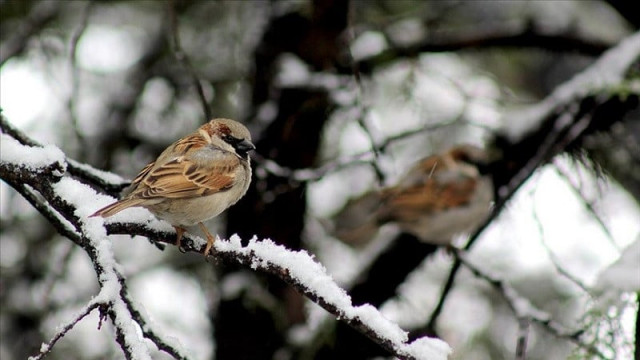Wildlife authorities launch sparrow count as bird's population dwindles
Over past 3 decades, Karachi saw up to 70% decline in population of sparrows

Wildlife authorities launched a campaign on Sunday to count the number of sparrows in the country's largest city of Karachi, where the human-friendly bird is fast disappearing from the skies.
The campaign will target specific urban and suburban hotspots of local sparrows in the metropolis, home to 20 million people.
Joined by bird lovers, and divided into several groups, wildlife workers took positions at potential sparrow hotspots, taking pictures and filming the birds' movements.
The results of the bird count will be announced on March 20, Javed Mahar, a conservator at the wildlife department of Sindh, told Anadolu.
Along with major South Asian cities like Mumbai, Kolkata, Dhaka and Lahore, Karachi offers a mix of glossy skyscrapers, bustling shopping centres, shanty slums and massive traffic jams.
Once a natural habitat for birds, the metropolis has lost its precious wildlife not only through the ravages of time but also because of increasing human influence.
The absence of sparrows means poor air quality
Read also: Eleven new bird species spotted in Sindh
According to Muhammad Moazzam Khan, technical adviser for the Worldwide Fund for Nature's (WWF) Pakistan chapter, the sparrow population has dwindled by between 60% and 70% in Karachi over the past two decades.
Alteration of habitats, which is a direct result of unplanned urbanisation and pollution, has badly affected the population of urban birds, mainly house sparrows, in major South Asian cities in the past two decades.
Aside from Karachi, Lahore, Peshawar, Rawalpindi and Faisalabad are among the most polluted cities in the region.
Lahore and Karachi, along with India's capital New Delhi, commercial capital Mumbai, Kolkata and Bangladesh's capital Dhaka, have topped the daily rankings of the world's most polluted cities this winter owing primarily to escalating industrialisation and unplanned urbanisation in recent decades.
Instead of sparrows, human-friendly birds, who also serve as indicators of air quality; bird species such as kites, crows and mynas have occupied the skies of these cities.
"Presence of sparrows in large numbers means good air quality. If they leave a place, that simply means the quality of the environment has alarmingly declined there," Khan said.



















COMMENTS
Comments are moderated and generally will be posted if they are on-topic and not abusive.
For more information, please see our Comments FAQ